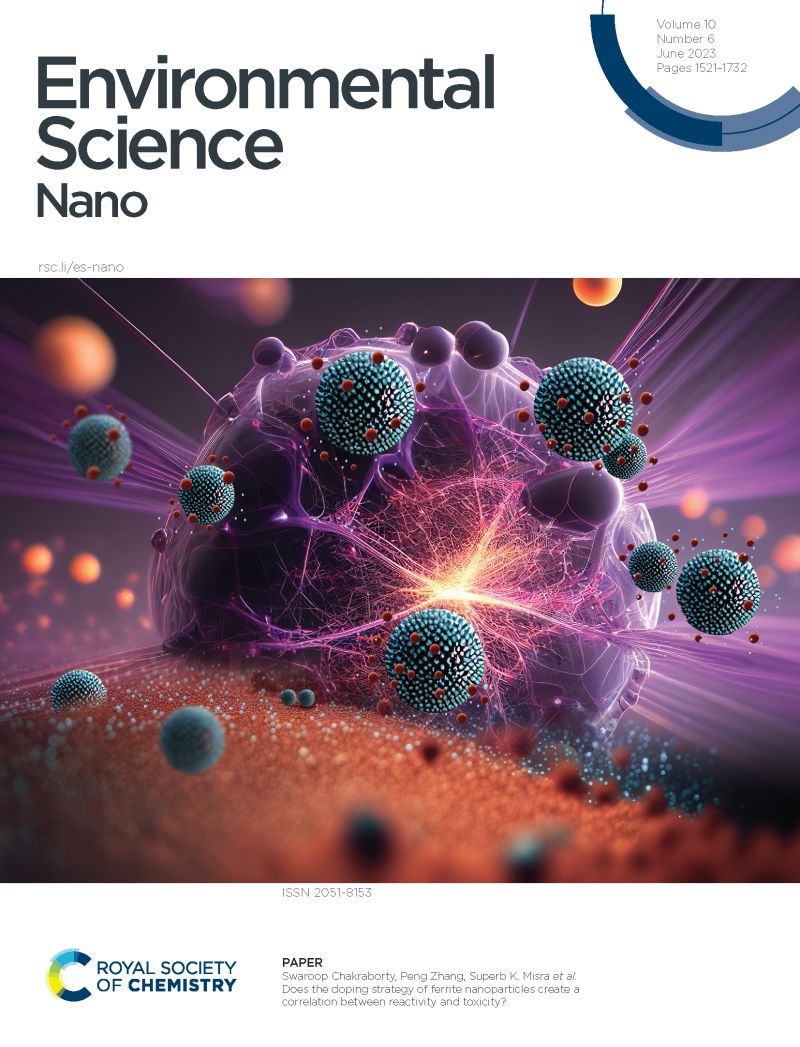A multi-technique approach for nanoherbicide tracking: uptake and translocation pathways of metribuzin nanocarrier in weed plants
IF 5.8
2区 环境科学与生态学
Q1 CHEMISTRY, MULTIDISCIPLINARY
引用次数: 0
Abstract
Understanding the strategies of delivering active ingredients with nanoparticles to plant species is crucial to implement a safe-by-design approach for pesticides. Here, we used metribuzin (MTZ) as a study model to understand the plant uptake and distribution pathways of polymeric nanocarriers. We investigated the weed-control efficacy, uptake, internalization, and distribution of the (nano)herbicide MTZ in Amaranthus viridis (C4 species) and Bidens pilosa (C3 species), after soil and foliar application. Radiolabeled herbicide and fluorescent probes were used as complementary tools to track both MTZ and nanoparticles in plants. The weed-control results indicated significant dose reductions with MTZ nanoencapsulation (from ½ to 10-fold doses). Root uptake was an efficient pathway for A. viridis and for B. pilosa entry of nanoMTZ was preferentially by stomata and was internalized in leaf mesophyll cells. No differences in herbicide uptake were observed in the soil, and nanoMTZ distribution was 1.3-1.5 lower than MTZ. After foliar application, nanoMTZ was absorbed 2.5 times more than MTZ in A. viridis and was similar in B. pilosa. NP was concentrated in the vascular cells after soil application and in the stomata entrance after foliar application. For B. pilosa, the internalization in the leaf mesophyll was more evident than in A. viridis. Our findings indicated that consideration of the target weed species and application mode will increase the efficacy of control using nanoformulations.纳米除草剂跟踪的多技术方法:嗪草酮纳米载体在杂草植物中的吸收和转运途径
了解利用纳米颗粒向植物物种输送活性成分的策略对于实施农药安全设计方法至关重要。在此,我们以灭草松(MTZ)为研究模型,了解聚合物纳米载体的植物吸收和分布途径。我们研究了(纳米)除草剂 MTZ 在苋属(C4 种)和 Bidens pilosa(C3 种)土壤和叶面施用后的除草效果、吸收、内化和分布。利用放射性标记除草剂和荧光探针作为互补工具,跟踪植物体内的 MTZ 和纳米颗粒。除草结果表明,MTZ纳米包囊的剂量显著降低(从1/2到10倍剂量)。根部吸收是A. viridis和B. pilosa进入纳米MTZ的有效途径,纳米MTZ主要通过气孔进入,并在叶片间质细胞中内化。除草剂在土壤中的吸收没有差异,纳米 MTZ 的分布比 MTZ 低 1.3-1.5。叶面施肥后,纳米 MTZ 在 A. viridis 中的吸收率是 MTZ 的 2.5 倍,在 B. pilosa 中的吸收率与 MTZ 相似。土壤施用后,氮磷主要集中在维管细胞中,叶面施用后则集中在气孔入口处。对 B. pilosa 而言,叶中叶的内化比对 A. viridis 更明显。我们的研究结果表明,考虑目标杂草的种类和施药方式将提高纳米制剂的防治效果。
本文章由计算机程序翻译,如有差异,请以英文原文为准。
求助全文
约1分钟内获得全文
求助全文
来源期刊

Environmental Science: Nano
CHEMISTRY, MULTIDISCIPLINARY-ENVIRONMENTAL SCIENCES
CiteScore
12.20
自引率
5.50%
发文量
290
审稿时长
2.1 months
期刊介绍:
Environmental Science: Nano serves as a comprehensive and high-impact peer-reviewed source of information on the design and demonstration of engineered nanomaterials for environment-based applications. It also covers the interactions between engineered, natural, and incidental nanomaterials with biological and environmental systems. This scope includes, but is not limited to, the following topic areas:
Novel nanomaterial-based applications for water, air, soil, food, and energy sustainability
Nanomaterial interactions with biological systems and nanotoxicology
Environmental fate, reactivity, and transformations of nanoscale materials
Nanoscale processes in the environment
Sustainable nanotechnology including rational nanomaterial design, life cycle assessment, risk/benefit analysis
 求助内容:
求助内容: 应助结果提醒方式:
应助结果提醒方式:


